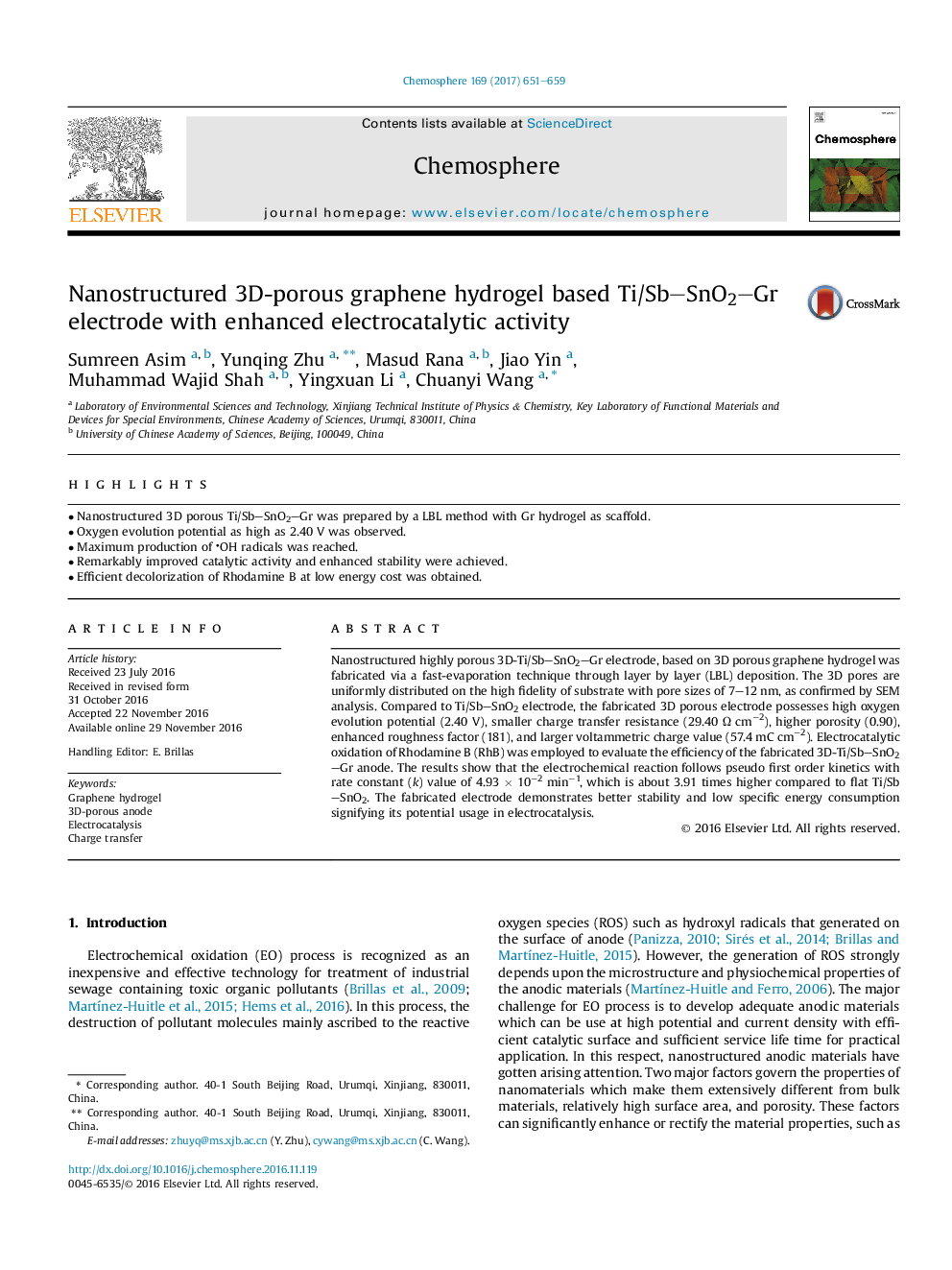| Article ID | Journal | Published Year | Pages | File Type |
|---|---|---|---|---|
| 5747055 | Chemosphere | 2017 | 9 Pages |
â¢Nanostructured 3D porous Ti/Sb-SnO2-Gr was prepared by a LBL method with Gr hydrogel as scaffold.â¢Oxygen evolution potential as high as 2.40 V was observed.â¢Maximum production of OH radicals was reached.â¢Remarkably improved catalytic activity and enhanced stability were achieved.â¢Efficient decolorization of Rhodamine B at low energy cost was obtained.
Nanostructured highly porous 3D-Ti/Sb-SnO2-Gr electrode, based on 3D porous graphene hydrogel was fabricated via a fast-evaporation technique through layer by layer (LBL) deposition. The 3D pores are uniformly distributed on the high fidelity of substrate with pore sizes of 7-12 nm, as confirmed by SEM analysis. Compared to Ti/Sb-SnO2 electrode, the fabricated 3D porous electrode possesses high oxygen evolution potential (2.40 V), smaller charge transfer resistance (29.40 Ω cmâ2), higher porosity (0.90), enhanced roughness factor (181), and larger voltammetric charge value (57.4 mC cmâ2). Electrocatalytic oxidation of Rhodamine B (RhB) was employed to evaluate the efficiency of the fabricated 3D-Ti/Sb-SnO2-Gr anode. The results show that the electrochemical reaction follows pseudo first order kinetics with rate constant (k) value of 4.93 Ã 10â2 minâ1, which is about 3.91 times higher compared to flat Ti/Sb-SnO2. The fabricated electrode demonstrates better stability and low specific energy consumption signifying its potential usage in electrocatalysis.
